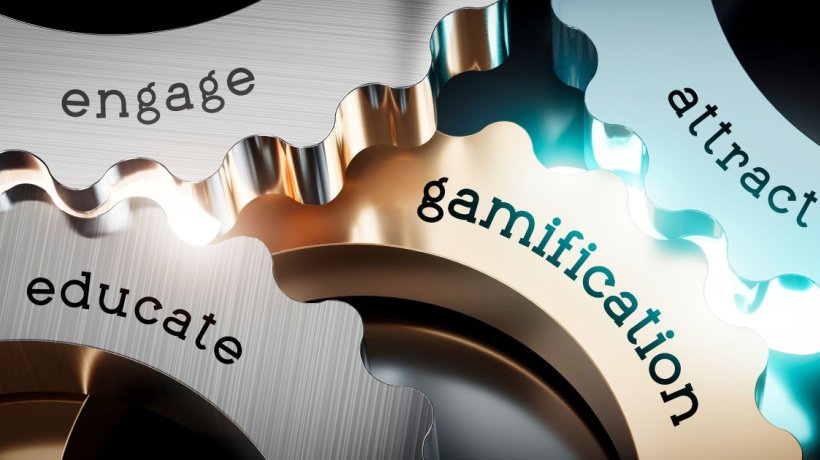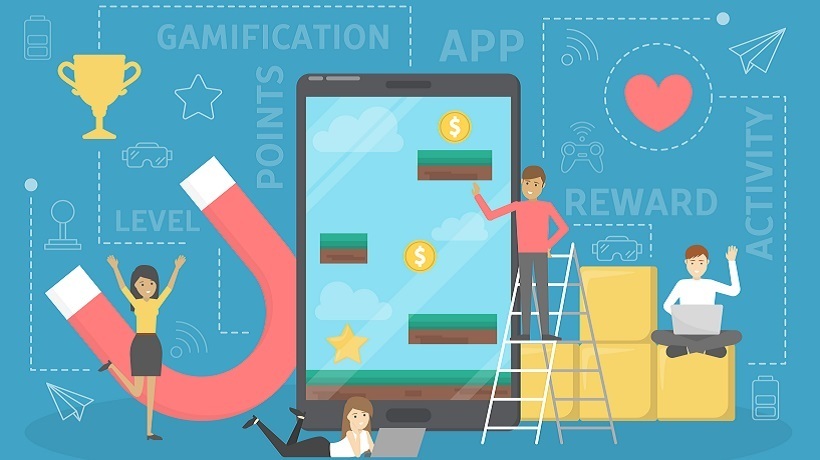Gamification: Engagement, Retention, And More
Pop quiz: what do some of the world’s largest corporations, like Google, Microsoft, Cisco, Deloitte, Sun Microsystems, IBM, L’Oreal, Canon, Lexus, FedEx, UPS, and Wells Fargo, who represent a broad array of industries, have in common? Answer: gamification and game-based learning!
Gamification is the process of applying game design elements to non-game contexts. It’s used in education for many reasons, including motivating learners to complete assignments and improve grades.
To Gamify Or Not To Gamify?
That is, indeed, the big question. However, judging by the data alone, one can’t be faulted for leaning toward gamification. Due to its effectiveness in producing greater learner engagement and better overall learning outcomes, over the past decade or so there’s been tremendous interest in game-based learning. According to one source:
- 80% of the US workforce is convinced of the more engaging qualities of game-based learning
- 83% of employees feel more motivated at work following a gamified training experience
- Gamification improves employee engagement by over 60%
- Because of its inherently higher-quality training features, gamification improves productivity by over 50%
- Companies that do employ gamification as part of their L&D strategy enjoy much higher conversion rates: over 700%
Corporations and their employees are convinced that gamification is worth the investment, and the gamification industry agrees with their assessment. In 2020, the industry had a value of $9.1 billion. According to industry watchers, that figure is set to explode to $30.7 billion by 2025, expanding at a compound annual growth rate (CAGR) of 27.4%. Other estimates put the CAGR between 2020 and 2030 at a brisk 24.2% clip. By 2024, education and game-based learning solution providers will earn over $24 million in annual revenues.
This evidence-based assessment of the state of the union of gamification and its allied industries, therefore, undeniably confirms the value of gamification. So, perhaps, the real question shouldn’t be whether to gamify or not, but how to do it more effectively. And, like other learning strategies, the more well-thought-out your approach to gamifying your learning content, the more effective will be the learning outcomes you’ll achieve. Here are five tips to help you gamify your eLearning.
5 Tips To Gamify Your eLearning
1. Create An Interactive Game Outline
An interactive game outline is a visual representation of the game you plan to develop. This helps you organize your ideas and keep track of what needs to happen next. You can use a simple spreadsheet or a free online tool like Google Sheets. The best way to use game outlines effectively is to develop reusable templates with the following characteristics:
- Keep it simple
The golden rule is to keep gamification simple, so as not to overwhelm your audience. To do that, choose an outline with minimal complexities. However, keep in mind that while gamification must be fun, it shouldn’t make learning overly simple (i.e., non-challenging). - Use templates based on course learning objectives
For instance, learn/recall-type lessons require simple, list-type template functionality. Learn/apply-type modules, however, might require more elaborate outlines, involving lots of practice and exercises. - Use outlines with appropriate game mechanics
Outlines serve as the blueprint for gamifying your courses and, therefore, must contain all the gaming elements you plan to leverage in your course, for example, "hints", "dollars", "unlockable content", "totems" etc. Modules that teach individual skills may require a different set of game mechanics than those involving team play or group challenges.
It's important that each outline clearly defines the "rules of engagement" for the game at the outset. These rules serve two important purposes when gamifying your learning content. Firstly, they’ll help users engage with the interactive gaming elements you add to your content. More importantly, though, they’ll help L&D content creators to quickly assess whether the template is the right fit for gamifying their lessons/modules.
2. Add Challenges And Rewards
A good gamification strategy includes challenges and rewards. Challenge yourself to complete an activity within a certain timeframe. Reward yourself when you meet those goals. Not all challenges must, however, be time-based. Other challenges to consider include accomplishing certain strategic objectives—such as earning a specific dollar value in profit by the end of a module, or closing the highest number of deals in each lesson.
So, what types of rewards do learners most prefer in gamified learning? Researchers concluded that of the population of learners surveyed:
- Only a small section, 2%, preferred virtual currency rewards
- The vast majority, 30%, enjoyed the thrill of progressing to the next level of a challenge
- 27% liked collecting points and higher scores during challenges
- 26% were in the challenge so they might be rewarded with real-time feedback on their performance
Other rewards and recognition features include badges and avatars, leaderboards, performance graphs, and progress meters/bars that act as motivators for individual and team players. Regardless of what game mechanics you use to lay out the challenges, it’s important to motivate and engage your learners by rewarding them for participating in the challenge.
3. Include Visual Aids
Gamification leverages appealing design and aesthetic elements to draw learners into participating in the game. One of the easiest ways to make learning fun is by adding visual aids. This can range from simple things like using images to illustrate concepts to more complex things like creating games. Here are some gamification best practices when deciding what visual aids to include:
- Design visual "hooks"
The most engaging gamification elements are those with "hooks" that draw learners to try them out. Your learning content should inspire you on the motif or theme for the visuals you choose. - Don’t ignore typographic elements
Font colors, pitch, size, and other typographical elements can enhance the visual appeal of your gamification efforts. Use script or handwriting fonts to convey special instructions, while regular styling can be used to communicate other instructions within the game. Caution: don’t go overboard with fonts and typefaces as that may impact the "seriousness" of the game. - Visual-enable game navigation
While text-based drop-down navigational features are simple to implement, adding intuitive icons to help learners/players navigate through the game can be a great strategy. Caution: regardless of what icons or images you use as visual aids in your game, it’s important to standardize and use them consistently. - Visual pointers and assistance
Use visual cues, help aids, and pointers throughout the game, so that learners don’t have to stress about what’s next or how to proceed within a specific situation. Sure, they could navigate to the help screen, or refer to online documentation, but clicking on a designated icon or avatar is far easier.
4. Incorporate Social Media Interactions
There has been academic research, conducted in the context of students in higher-learning settings (universities/doctoral studies), which:
…revealed that online social media used for collaborative learning had a significant impact on interactivity with peers, teachers, and online knowledge sharing behavior…Additionally, interactivity with teachers, peers, and online knowledge sharing behavior has seen a significant impact on students’ engagement which consequently has a significant impact on students’ academic performance.
An easy way, therefore, to add interactivity to an eLearning course is through social media interactions. Learners can share what they learn with friends and family via Facebook, Twitter, etc. They can also ask questions and receive answers from other learners. A real-world example of such social interactions is the social networking platform LinkedIn and its learning portal LinkedIn Learning—where users network, share knowledge and experiences, and learn from each other. Other social media elements that learning content developers can incorporate into their content include:
- Polling via Twitter
- Live Facebook/TikTok video posts
- Encouraging user-generated content (UGC) on social media pages
- Using social media treasure hunts, and posting trivia questions on social media
- Giving recognition to learners with badges for "liking", viewing, or commenting on lesson content
According to researchers, although the use of social media features (such as badges, likes, follows, etc.) don’t resemble actual games, their use in gamified learning taps into the same "psychological and phenomenological properties with gaming." eLearning content developers can thus tap into those similarities, to leverage social networking, to persuade learners to better engage with social learning content.
5. Provide Feedback
Regardless of the type of learning intervention implemented, instructors and learners both benefit a lot from comments, critiques, and observations from each other. When incorporating gamification into your learning, the same rules apply. If you’re using gamification techniques in your eLearning courses, make sure to provide feedback to your learners. This will encourage them to keep up with the material and give them a chance to improve their performance.
Immediate feedback about learner performance can be as simple as a thumbs-up or thumbs-down icon. However, the best practice also dictates that providing additional, more extensive feedback—such as specific deficiencies and/or strengths—can help learners to better understand critical concepts from within the gamified learning content.
Additionally, open up the feedback loop to also receive comments and assessments about various aspects of the course. This will enable you/your team to modify gamification elements that learners don’t find useful, and it’ll also help you accentuate and enhance gaming aspects that are a hit.
Parting Thoughts
In the context of adult eLearning, gamification is the application of game mechanics that enhance the learning experience. Compared to non-gamified materials, gamification improves knowledge retention, enhances engagement with the course, heightens learner motivation, and results in better knowledge transfer to the workplace.
While gamifying a particularly "dry" subject can "spice" it up and make it more fun for the learner, it also helps the learners develop real-world skills, such as critical thinking, problem-solving, team collaboration, and social engagement. By implementing the five gamification techniques discussed in this post, L&D teams can create eLearning that produces better overall learning outcomes.










